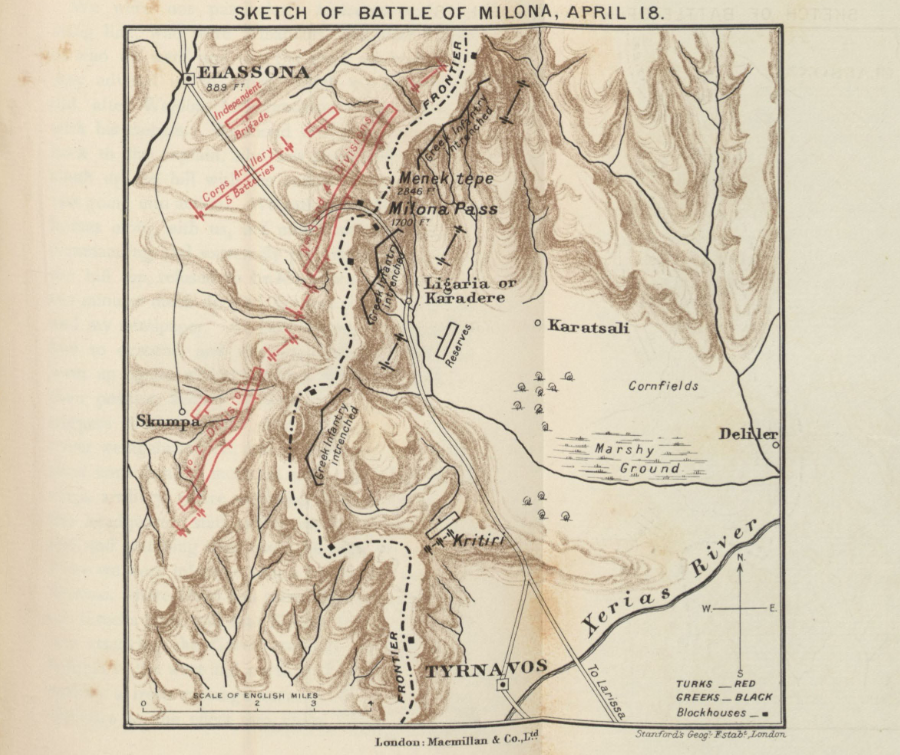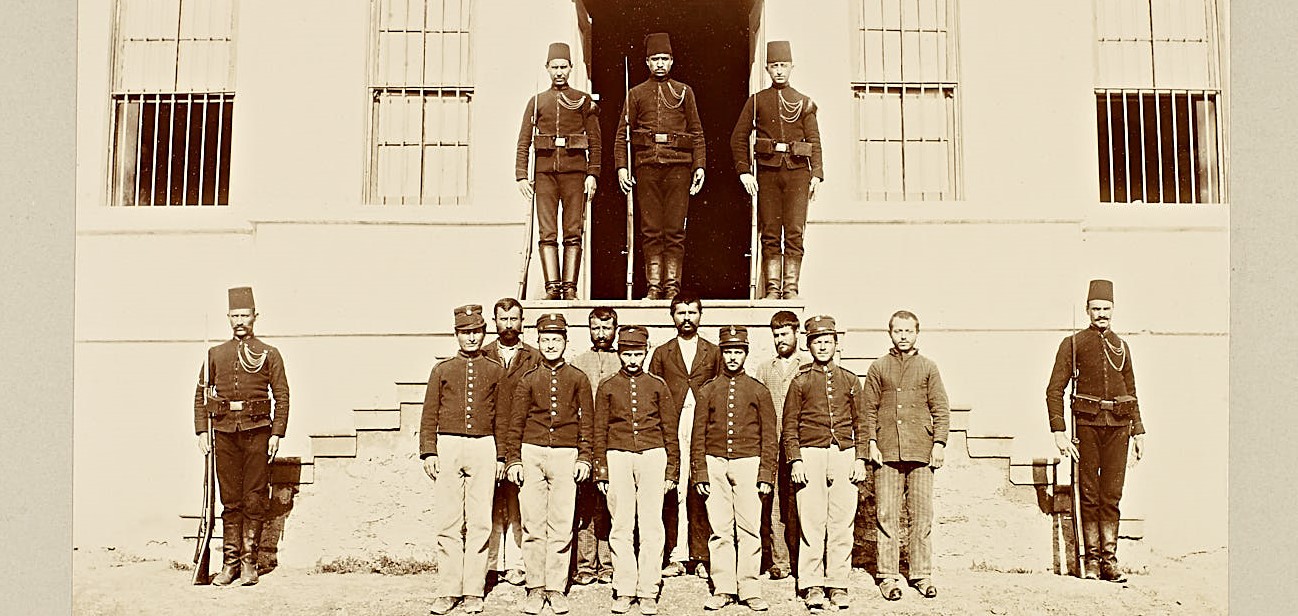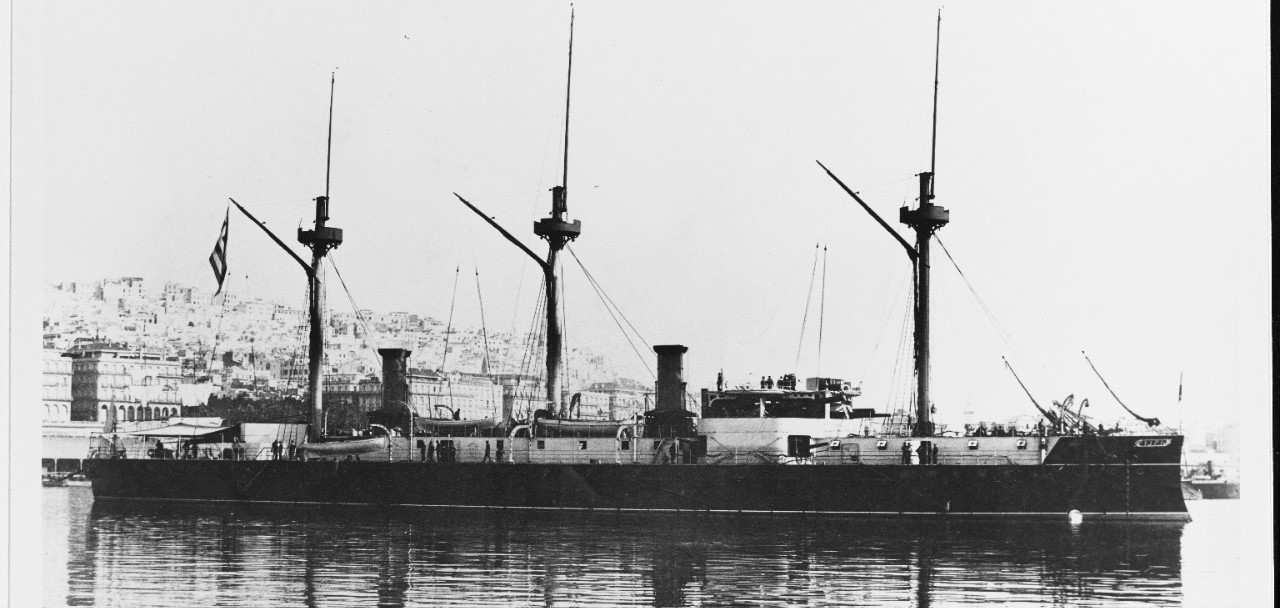The 1897 Ottoman-Greek War was a short conflict that broke out between the Ottoman Empire and the Kingdom of Greece due to uprisings on the island of Crete and Greece’s border violations. Also known as the "Thirty Days' War" and the "Thessaly War," the hostilities began after Greece landed troops on Crete and pursued an aggressive policy toward Ottoman territory. The clashes were concentrated mainly on the Thessaly and Epirus fronts, where the Ottoman army achieved significant victories and advanced as far as Domokos. In the Battle of Domokos, the Ottoman army almost completely routed the Greek forces. However, the intervention of the Great Powers halted the Ottoman advance toward Athens, and the war concluded with the Treaty of Istanbul.

Map of the Balkans in 1897 (Source: 1897: Clive Bigham )
The Cretan Question and Greek Intervention
The 19th century was a period of accelerated dissolution for the Ottoman Empire, marked by increased influence from Western powers and widespread nationalist movements in the Balkans. The process began with the Greek revolt of 1821 and culminated in Greek independence in 1830, setting a precedent for other Balkan communities. After independence, Greece pursued an expansionist foreign policy under the Megali Idea doctrine, which aimed to restore the territorial extent of the Byzantine Empire. Crete, Thessaly, Epirus, and Macedonia were primary targets within this vision.
Crete had been under Ottoman rule since the 17th century, but Greece’s influence gradually grew, especially in regions with a majority Greek population. The Greek-led uprisings in 1866, 1878, and 1896 turned the Cretan issue into an international concern. The Ottoman government granted various concessions to the local population in an attempt to maintain order, but these measures failed to prevent Greek-backed uprisings and the increasing interference of European powers.
In early 1897, a new Greek uprising erupted on Crete, and on February 13, 1897, Greece deployed troops to the island in an act of de facto occupation. This move was seen by the Ottomans as a casus belli. Greece not only intervened in Crete but also began supporting irregular bands and border incursions in Thessaly and Epirus. In response to these Greek attacks, launched without a formal declaration of war, the Ottoman Empire declared war on Greece on April 17, 1897, and mobilized its forces.
The Fronts and Course of the War
The war’s primary theaters were the Thessaly and Epirus fronts. The Ottoman Empire pursued an offensive strategy in Thessaly and took up defensive positions in Epirus. The Ottoman advance in Thessaly was rapid and effective. To finance the war and mobilize popular support, public auctions were held at Yıldız Palace.

A Photo from the Auction Held in Yıldız (Source: Istanbul University Rare Books Library )
Thessaly Front
Under the command of Field Marshal Ethem Pasha, the Ottoman army swiftly crossed the Milona Pass and captured key locations such as Tirnova, Yenişehir (Larissa), Trikala, and Galos. The most significant success was the Battle of Domokos on May 20, 1897. Domokos, a heavily fortified and mountainous region, represented the last Greek line of defense. Ottoman troops quickly broke through this line, forcing Greek forces under Crown Prince Constantine to retreat as far as Lamia. The road to Athens was left open to the Ottomans.

Commanders of the Alasonya Army (Source: Istanbul University Rare Works Library )
Battle of Milona Pass (18 April 1897)
This was the first major battle that enabled the rapid advance of the Ottoman army on the Thessaly Front. Ottoman troops, crossing the Milona Pass—which was known in European military circles as a difficult route—in just 24 hours, created great surprise. This success turned the course of the war in favor of the Ottomans.

Plan of the Battle of Milano Pass (Source: 1897: Clive Bigham )
Battle of Tirnova (24 April 1897)
This battle took place as part of the continued Ottoman offensive deeper into Thessaly. Ottoman forces broke through Greek defenses in this area and continued their advance.
Battle of Larisa (25 April 1897)
This battle followed immediately after Tirnova. The Ottoman army captured another significant settlement, further consolidating its dominance in Thessaly.

Cannons Captured from the Greek Army by the Ottoman Army on Display at the Taksim Artillery Barracks (Source: Istanbul University Rare Works Library )
Battle of Trikala (26 April 1897)
The capture of Trikala provided strategic depth to the Ottoman troops. This success boosted morale and led to the disintegration of Greek forces.
Battles of Velestino (30 April and 5–6 May 1897)
These battles occurred in two phases. Although the Ottoman army failed in its initial attack, it succeeded in capturing the hills of Velestino in the second assault. With the Greek army retreating from the area, the Ottomans advanced toward Galos and Domokos.
Battle of Domokos (17–20 May 1897)
This was the turning point of the war and the largest engagement in which the Ottoman army secured a decisive victory, opening the path to Athens. The Greek army suffered a heavy defeat in this battle and was forced to retreat.

Captured Greek Soldiers (Source: Istanbul University Rare Books Library)
Epirus Front
The Epirus Front remained relatively static. Here, the Ottoman army assumed a defensive posture, particularly along the Albanian border, to prevent incursions by Greek irregulars. No major engagements occurred on this front, though limited skirmishes allowed the Ottomans to maintain regional control.
Naval Power and Aegean Balance
At the outbreak of the war, the Ottoman navy appeared large on paper, consisting of 5 frigates, 18 armored frigates, 60 steamships, 2 galleons, 106 steam launches, 8 corvettes, and various torpedo carriers. However, most of these vessels had seen little maintenance, had outdated artillery systems, and were effectively unusable. Although Field Marshal Hasan Rami Pasha was appointed naval commander, the fleet played a limited role in the war.
In contrast, Greece had acquired modern warships from Britain and reorganized its navy according to contemporary standards. The Greek navy included 5 ironclads, 3 cruisers, 1 torpedo ship, 3 transport ships, 12 coastal torpedo boats, and support vessels. The superior armor, maneuverability, and torpedo technology of the Greek fleet gave it control over the Aegean Sea.
This naval superiority was particularly decisive in supporting military operations on Crete. On February 13, 1897, Greek forces landed on the island without encountering Ottoman naval resistance.

Greek Ironclad Type Hydra Battleship (Source: Naval History and Heritage Command )
The Role of European Powers and Diplomatic Intervention
The military defeat of Greece prompted the intervention of the Great Powers. Britain, France, and Russia, among others, did not want the Ottomans to enter Athens. Fearing that a total Greek defeat would shift the regional balance of power in favor of Germany, the Powers called for a ceasefire on May 19, 1897. The Ottoman Empire complied and halted its advance, initiating peace negotiations.
The Treaty of Istanbul (1897)
Peace talks culminated in the Treaty of Istanbul, signed on December 4, 1897. The Ottomans were required to return the territories captured in Thessaly and agreed to peace in exchange for a war indemnity of four million Ottoman liras. The treaty's main provisions were:
- Thessaly would be returned to Greece.
- Greece would pay the Ottoman Empire four million liras in reparations.
- An additional 100,000 liras would be paid for damages to Muslim subjects of the Empire.
- Restrictions would be placed on existing capitulations.
- Cross-border raids and irregular bands would be suppressed.
Crete was granted autonomous status, a key step toward its eventual annexation by Greece in 1913.
Outcomes and Evaluation
The 1897 Ottoman-Greek War was a military success for the Ottoman Empire but a limited diplomatic victory. The Ottoman army, having lost prestige in the Russo-Turkish War of 1877–78, partially regained its standing by advancing to the outskirts of Athens. However, the intervention of the Great Powers prevented the Ottomans from securing lasting territorial gains. Greece, though militarily defeated, was protected diplomatically and continued to pursue its Megali Idea, ultimately expanding through the Balkan Wars.


